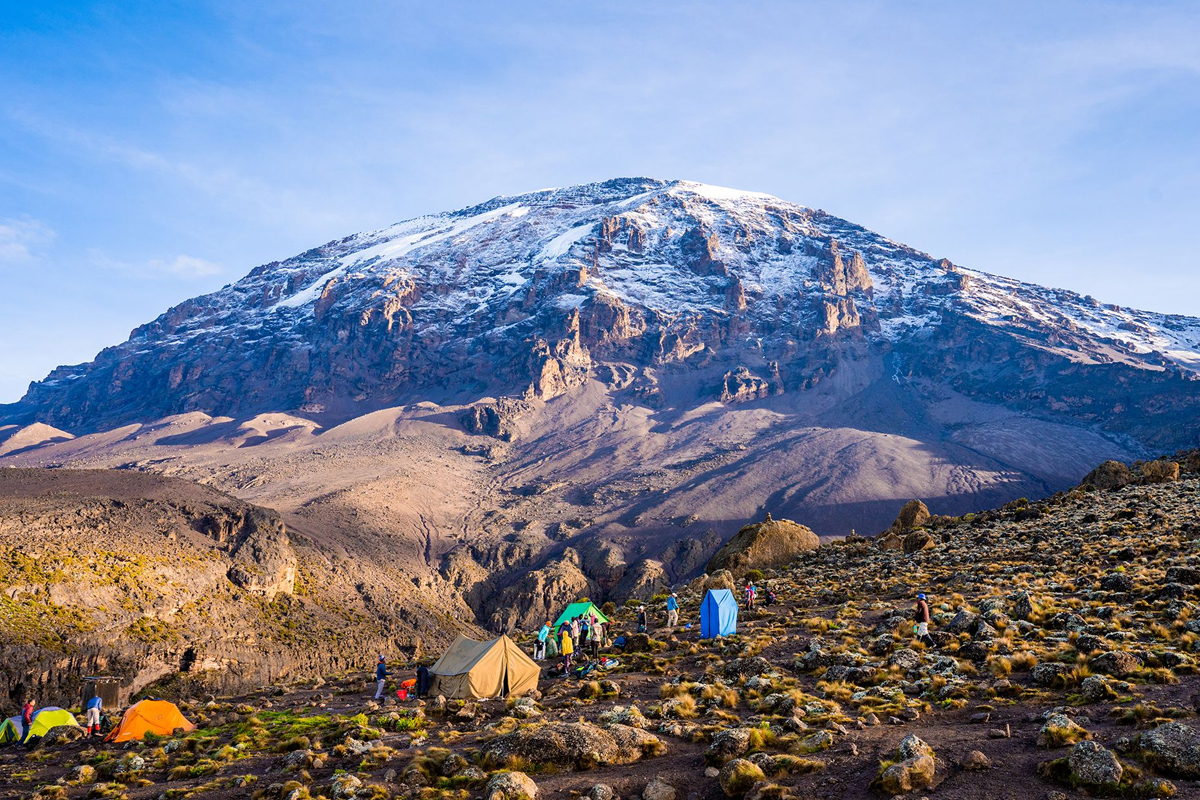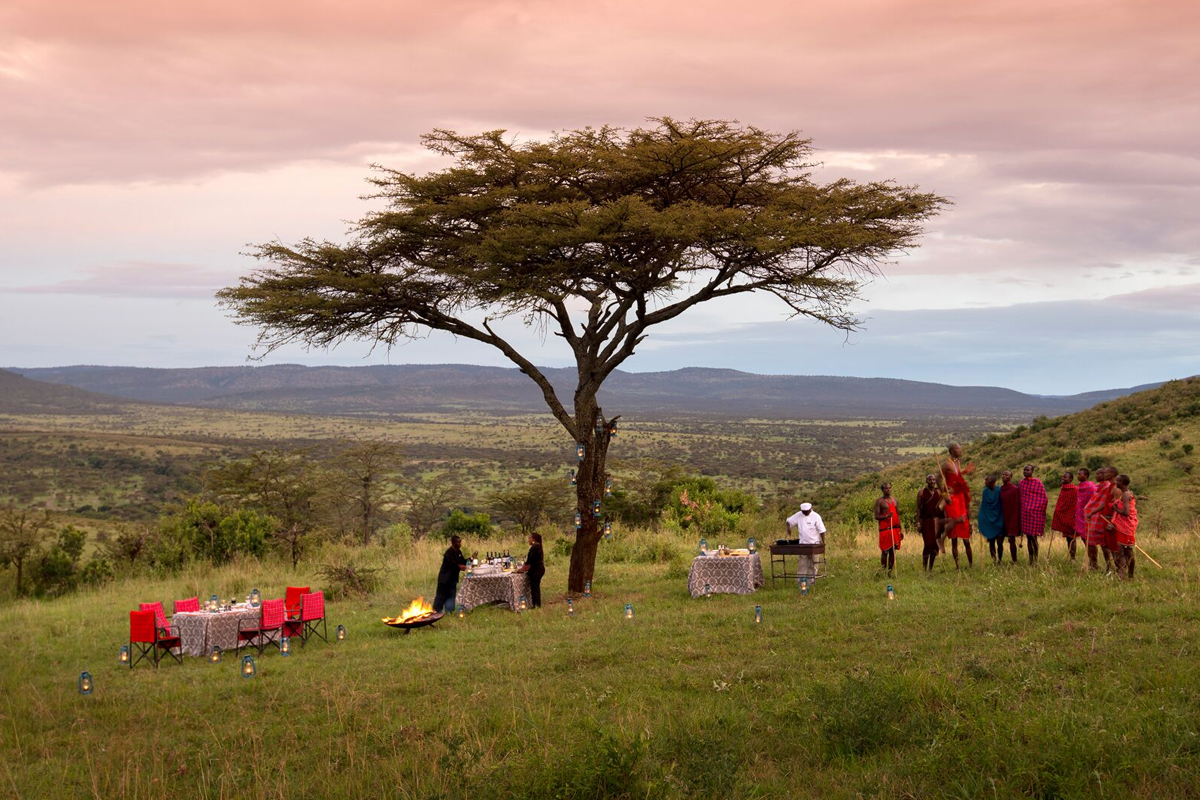Kilimanjaro National Park, a UNESCO World Heritage site, is one of the most iconic destinations in Africa. Home to the highest peak on the continent, Mount Kilimanjaro, this park offers a unique blend of natural beauty, cultural richness, and adventure. Whether you’re an avid climber or simply love nature, Kilimanjaro National Park is a must-visit. Let’s explore what makes this park so special.
History of Kilimanjaro National Park
Kilimanjaro National Park was established in 1973 and officially opened to public visitation in 1977. The park’s history is deeply intertwined with the cultural heritage of the local Chagga people, who have lived in the region for centuries. The mountain itself has been a site of reverence and significance long before it became a global tourist destination.
Geography and Climate
Location and Topography
Situated in Tanzania, near the Kenyan border, Kilimanjaro National Park covers an area of about 1,688 square kilometers. The park is dominated by Mount Kilimanjaro, which stands at 5,895 meters (19,341 feet). The mountain is composed of three volcanic cones: Kibo, Mawenzi, and Shira. This diverse topography provides a variety of landscapes, from lush rainforests to barren alpine deserts.
Climatic Conditions
The climate of Kilimanjaro National Park varies significantly with altitude. The lower regions experience tropical weather, while the summit sees arctic conditions. This drastic variation creates distinct ecological zones, each with unique characteristics. The weather can be unpredictable, with temperatures ranging from scorching hot to cold.
Mount Kilimanjaro
The Majestic Peak
Mount Kilimanjaro is the crown jewel of the park, drawing thousands of climbers from around the world each year. It’s the tallest free-standing mountain in the world and offers a relatively accessible climb compared to other peaks of similar stature.
Climbing Routes and Difficulty Levels
There are several routes to the summit, each with its own level of difficulty and scenic appeal:
- Marangu Route: Known as the “Coca-Cola” route, it’s the most popular and offers hut accommodations.
- Machame Route: Also called the “Whiskey” route, it is more challenging but provides stunning views.
- Lemosho Route: Less crowded, offering a longer and more scenic climb.
- Rongai Route: The only route approaching from the north, it is less frequented.
- Umbwe Route: The steepest and most challenging, suitable for experienced climbers.
Flora and Fauna
Unique Plant Species
Kilimanjaro National Park boasts a wide variety of plant life, ranging from lush montane forests at lower elevations to hardy lichens and mosses near the summit. The giant groundsels and lobelias in the moorland zone are particularly noteworthy for their unique adaptations to the harsh conditions.
Wildlife Diversity
The park is home to an array of wildlife, including elephants, buffaloes, leopards, and several primate species. Birdwatchers will be delighted by the presence of various bird species, such as the malachite sunbird and the African pygmy kingfisher.
Ecosystems within the Park
Montane Forest
The lower slopes of Kilimanjaro are covered with dense montane forests, which are rich in biodiversity. These forests are crucial for the local ecosystem, providing habitat for numerous species and playing a vital role in water catchment.
Alpine Desert
Above the forests lies the stark and beautiful alpine desert. This zone is characterized by rocky outcrops and sparse vegetation, creating a dramatic landscape that contrasts sharply with the lush forests below.
Arctic Summit
The summit zone of Kilimanjaro is an arctic desert, with glaciers and ice fields. The Uhuru Peak, the highest point, offers breathtaking views but also poses significant challenges due to the thin air and extreme cold.
Tourist Attractions
Popular Hiking Trails
Hiking is the main attraction in Kilimanjaro National Park, with each route offering unique experiences. Whether you’re looking for a leisurely trek or an intense climb, there’s a trail for you.
Scenic Viewpoints
The park offers several scenic viewpoints that provide panoramic vistas of the surrounding landscapes. These spots are perfect for photography and soaking in the natural beauty of the region.
Key Landmarks
Aside from Mount Kilimanjaro itself, other notable landmarks include the Shira Plateau, the Lava Tower, and the Barranco Wall, each offering distinct experiences and challenges for hikers.
Activities for Visitors
Hiking and Trekking
The primary activity in Kilimanjaro National Park is hiking. Whether you opt for a day hike in the lower forests or a multi-day trek to the summit, the park offers routes for all skill levels.
Bird Watching
Bird enthusiasts will find Kilimanjaro National Park a paradise, with a plethora of bird species inhabiting the various ecological zones. Bring your binoculars and prepare to spot some rare and beautiful birds.
Photography Opportunities
The diverse landscapes and unique wildlife make the park a photographer’s dream. From the lush forests to the stark summit, there are endless opportunities to capture stunning images.
Guided Tours and Expeditions
Available Tours
Several tour operators offer guided tours and expeditions, providing everything from basic packages to luxurious experiences. These tours often include transportation, meals, and accommodation, making the climb more accessible and enjoyable.
Benefits of Guided Tours
Guided tours offer numerous benefits, including experienced guides who ensure safety and provide valuable insights into the park’s ecology and history. They also handle logistics, allowing you to focus on enjoying the adventure.
Conservation Efforts
Preservation Initiatives
Efforts to preserve Kilimanjaro National Park are critical due to its unique environment and biodiversity. Conservation programs focus on protecting wildlife habitats, reducing human impact, and maintaining the park’s natural beauty.
Sustainable Tourism Practices
Promoting sustainable tourism is essential for the park’s future. Visitors are encouraged to follow guidelines that minimize their environmental footprint, such as carrying out all waste and respecting wildlife.
Best Time to Visit
Optimal Seasons
The best time to visit Kilimanjaro National Park is during the dry seasons, from late June to October and from late December to February. These periods offer the most stable weather conditions for climbing and hiking.
Weather Considerations
Weather can be unpredictable, especially at higher elevations. It’s important to be prepared for sudden changes in temperature and conditions, even during the dry season.
Travel Tips
Packing Essentials
Pack wisely for your trip to Kilimanjaro. Essentials include sturdy hiking boots, warm clothing for higher elevations, and lightweight gear for the lower slopes. Don’t forget sun protection and a good camera.
Health and Safety Tips
Altitude sickness is a common concern for climbers. It’s crucial to acclimate properly and be aware of the symptoms. Stay hydrated, eat well, and listen to your guide’s advice.
Accommodations
Lodging Options
There are several lodging options within and around Kilimanjaro National Park, ranging from basic huts on the mountain routes to comfortable lodges and hotels in nearby towns.
Camping Sites
For a more immersive experience, consider camping at the designated sites along the climbing routes. This allows you to fully engage with the natural surroundings and enjoy the tranquility of the park.
Cultural Experiences
Local Communities
Visiting Kilimanjaro National Park also offers a chance to connect with the local communities. The Chagga people, in particular, have a rich cultural heritage that adds depth to the overall experience.
Traditional Practices and Festivals
Engage in traditional practices and festivals to gain a deeper understanding of the local culture. These experiences provide a unique perspective on the relationship between the people and the mountain.
Conclusion
Kilimanjaro National Park is more than just a destination; it’s an adventure of a lifetime. From the majestic peak of Mount Kilimanjaro to the rich biodiversity and cultural heritage, the park offers something for everyone. Whether you’re seeking adventure, tranquility, or a deeper connection with nature, Kilimanjaro National Park delivers. Plan your visit, pack your bags, and get ready to explore one of the world’s most extraordinary places.
FAQs
What is the best route to climb Mount Kilimanjaro?
The best route depends on your preferences and experience. The Marangu Route is popular for its hut accommodations, while the Machame Route offers more scenic views and a challenging trek.
Are there any age restrictions for climbing?
While there are no strict age restrictions, climbers should be in good health and physically fit. Children under 10 and older adults should consult with a physician before attempting the climb.
How long does it take to climb Kilimanjaro?
The duration of the climb varies by route, typically ranging from 5 to 9 days. Longer routes allow for better acclimatization, increasing the chances of reaching the summit.
What kind of wildlife can be seen in the park?
Kilimanjaro National Park is home to a variety of wildlife, including elephants, buffaloes, leopards, and numerous bird species. Wildlife sightings are more common in the lower forest zones.
Is a permit required to visit the park?
Yes, a permit is required to enter Kilimanjaro National Park. These can be obtained through tour operators or at the park’s entrance gates.



